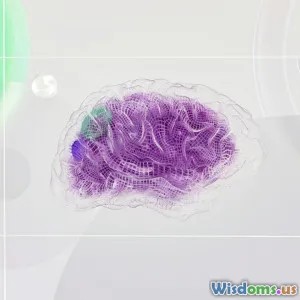
Dreams as a Tool for Problem Solving
6 min read Explore how dreams can aid in problem-solving and creativity, revealing insights from brain science and dream research. (0 Reviews)
Dreams as a Tool for Problem Solving
Dreams have fascinated humanity for centuries, often regarded as mysterious realms where our subconscious mind roams freely. But beyond their enigmatic nature, dreams can serve a practical purpose: problem-solving. This article explores the connection between dreams, creativity, and our cognitive processes, revealing how we can harness the power of our dreams to tackle real-world challenges.
The Science Behind Dreams
To understand how dreams can aid in problem-solving, we first need to explore what happens in our brains while we sleep. Dreams primarily occur during the rapid eye movement (REM) stage of sleep, a phase characterized by heightened brain activity. During REM sleep, the brain engages in complex processes that involve memory consolidation, emotional regulation, and creativity.
Research has shown that the brain’s neural networks are highly active during dreaming, often leading to unique connections and insights that may not be accessible during waking hours. This phenomenon lays the groundwork for understanding how dreams can help us solve problems.
The Role of the Subconscious Mind
One of the key aspects of dreaming is the activation of the subconscious mind. Unlike the conscious mind, which is often constrained by logic and societal norms, the subconscious operates without these limitations. This freedom allows us to explore unconventional ideas and approaches, which can lead to innovative solutions to problems.
For instance, the famous chemist August Kekulé reportedly discovered the structure of benzene after dreaming of a snake biting its own tail, symbolizing a cyclical structure. Such instances illustrate how dreams can provide insights into complex problems by presenting them from unique perspectives.
Problem-Solving Through Dreams
1. Incubation of Ideas
Incubation is a well-documented phenomenon in psychology where a problem is put aside for a while, allowing the subconscious mind to work on it. By doing so, individuals often experience breakthroughs upon returning to the problem later. This process can be enhanced by actively thinking about the problem before sleep. Research suggests that when individuals focus on a specific issue before bed, they are more likely to dream about it and arrive at potential solutions.
2. Enhanced Creativity
Dreams can also enhance creativity by allowing us to combine disparate ideas in ways we may not consider while awake. The brain’s ability to make unusual connections during dreaming can lead to creative insights that can be applied to various fields, including art, science, and business. For example, renowned inventor Thomas Edison would often take naps while thinking about his inventions, believing that his dreams could provide him with the creative spark he needed.
3. Emotional Processing
Another crucial function of dreaming is emotional processing. By working through emotions and experiences in dreams, individuals can gain clarity on challenges they face. This emotional resolution can lead to improved problem-solving abilities in waking life, as individuals approach problems with a clearer mindset.
Practical Ways to Utilize Dreams for Problem Solving
While it may seem abstract, there are concrete strategies you can employ to leverage the power of your dreams in problem-solving:
1. Keep a Dream Journal
Recording your dreams upon waking can help you reflect on their content and identify recurring themes or solutions. Over time, you may notice patterns that can inform your waking problem-solving processes.
2. Set Intentions Before Sleep
Before going to bed, consciously think about a problem you wish to solve. This practice, known as dream incubation, can prime your subconscious mind to work on the issue while you sleep.
3. Embrace Lucid Dreaming
Lucid dreaming, where individuals become aware that they are dreaming and can exert some control over the dream narrative, can be a powerful tool for problem-solving. In a lucid dream state, you can actively explore solutions and scenarios related to your challenges.
Conclusion
Dreams are more than mere illusions of the night; they are potent tools for problem-solving that tap into the depths of our subconscious. By understanding the science behind dreams and actively engaging with our dream life, we can unlock innovative solutions to the challenges we face in our waking lives. Embrace your dreams, keep a journal, and set your intentions for a more creative and problem-solving approach to life.
With these insights, you can transform your sleep into a valuable resource for tackling the obstacles you encounter, harnessing the power of your dreams to fuel your creativity and problem-solving abilities.
Rate the Post
User Reviews
Popular Posts





















